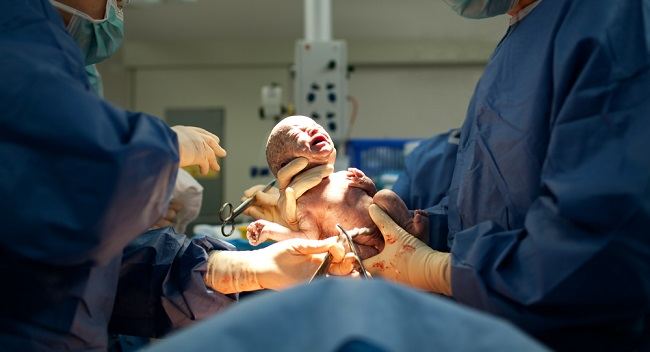Endophthalmitis is inflammation inside the eyeball due to infection. Symptoms of endophthalmitis vary, ranging from red eyes, eye pain, eyes oozing pus, until the decrease in visual acuity.
In most cases, endophthalmitis occurs due to the entry of bacteria or fungi from the outside into the eyeball. These germs can enter through wounds that appear after an eye injury or after eye surgery.

Endophthalmitis can happen to anyone. Endophthalmitis is a rare condition. This condition must be treated immediately. If treated too late, patients with endophthalmitis can experience permanent blindness.
Causes of Endophthalmitis
Endophthalmitis can be caused by infection with germs, including bacteria, fungi, viruses, and parasites, inside the eyeball. Based on the source of infection, endophthalmitis is divided into 2 types, namely:
Exogenous endophthalmitis
Exogenous endophthalmitis is caused by an infection originating outside the body. This condition can occur when germs enter the eyeball during eye surgery, an injection in the eyeball, or an eye injury.
Endogenous endophthalmitis
Endogenous endophthalmitis occurs when an infection in the body spreads to the eye, such as an infection in the bloodstream.
There are several conditions that can increase the risk of developing endophthalmitis, including:
- Damage to the lens of the eye
- Loss of fluid behind the eyeball
- Wounds in the eye that are not treated and are left open
- There is a foreign object in the eye
- Living in a dirty area, so the eyes are at risk of getting dirt
- Undergoing eye surgery, such as cataract surgery or glaucoma surgery
Symptoms of Endophthalmitis
Symptoms of endophthalmitis can appear within a few days to several months. Some of the symptoms are:
- Red eye
- Swollen eyelids
- Pain in the eye that gets worse
- Sensitive to light
- Blurred vision
- Decreased visual acuity
- Pus coming out of the eye
When to go to the doctor
Immediately see an ophthalmologist if you experience the above symptoms after undergoing eye surgery or have an eye injury. The sooner endophthalmitis is treated, the lower the risk of endophthalmitis developing into a more serious condition.
Have regular check-ups with your doctor after undergoing cataract surgery or other eye surgery. Regular check-ups are carried out so that the doctor can know the progress of your eye condition.
Endophthalmitis Diagnosis
The doctor will ask about the symptoms and whether the patient has had surgery or had an eye injury. Then, the doctor will examine the patient's eyes. To confirm endophthalmitis, the doctor will also perform a number of investigations, such as:
- Ultrasound of the eye, to see the presence of wounds or foreign bodies in the eyeball
- Vitreous tap, namely taking a sample of fluid from inside the eyeball for types of germs that infect the eyeball
Endophthalmitis Treatment
Treatment of endophthalmitis depends on the cause. Some types of treatment that will be carried out by the doctor are:
- Antibiotic drugs, to treat bacterial infections of the eyeball. Antibiotics can be given by injection intravitreal (injection directly into the eyeball), intravenous injection (injection through a vein), or topical (applied) to the area around the eye that is infected.
- Corticosteroid medication to reduce inflammation inside the eyeball. Corticosteroid drugs can be given in the form of injections directly into the eyeball.
- Vitrectomy, to get rid of infected eye fluid.
For endophthalmitis caused by a fungal infection, the doctor will give antifungal drugs either in the form of injections or oral drugs.
Complications of Endophthalmitis
If left untreated, endophthalmitis can cause visual disturbances, permanent blindness, and phthisis bulbi. To prevent these complications, follow the medication and treatment recommended by your doctor.
If after a surgical procedure on the eye the doctor recommends wearing an eye patch (eye patch), follow the directions for use and storage recommended by the doctor. Also make sure to regularly check with the doctor, so that the doctor knows the progress of your condition.
Endophthalmitis Prevention
Use eye protection when you are at high risk of eye injury, for example if you work as a builder, sawmill, or athlete in a sport that involves physical contact.
If you have cataract surgery or other eye surgery, follow your doctor's instructions about what to do after surgery. In addition, do regular check-ups so that the doctor knows the progress of your condition.









